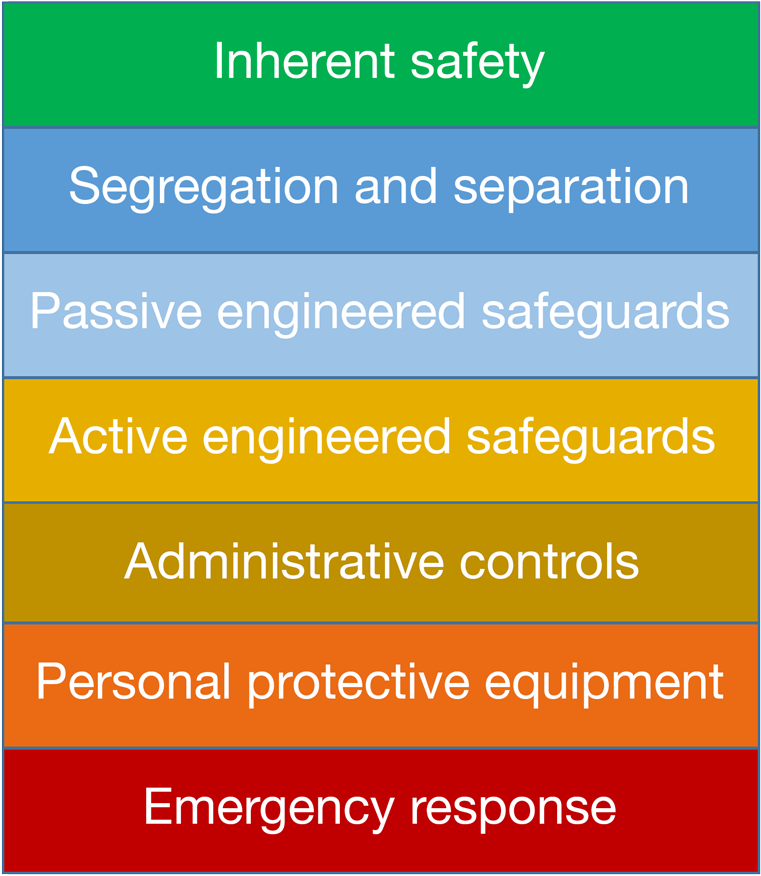The hierarchy of hazard controls is a system used to eliminate or minimize exposure to hazards and consists of a ranking of types of control measures. It is used when selecting controls to use in processes, for example, during process design or when making recommendations for risk reduction measures in PHA studies.

The reliability of the different types of control measures generally decreases down the hierarchy. Thus, the hierarchy is a prioritization of control preferences by type. Controls at the top of the hierarchy are favored over those lower in the hierarchy.
Inherent safety is at the top of the hierarchy. It focuses on eliminating or reducing the process hazards in a way that is permanent and inseparable from the process. First-order measures are favored over second-order measures. First-order measures eliminate a hazard, e.g. by substituting a toxic chemical with a non-toxic chemical. Second-order measures reduce the severity of a hazard or the likelihood of a release without the use of add-on safety devices, e.g. by redesigning a high-pressure, high-temperature process to operate at ambient temperatures and pressures.
Both types of inherent safety measures are favored over segregation and separation. Segregation employs a physical barrier between hazards and areas to be protected. Separation involves locating hazards sufficiently far from areas to be protected.
Engineered safeguards may be passive or active. Passive safeguards involve equipment that does not require physical actuation in order to perform the intended function, e.g. a dike wall around a storage tank. Active safeguards involve equipment that does requires physical actuation in order to function, e.g. a deluge system. Generally, passive safeguards are more reliable than active safeguards because there are no activation mechanisms to fail.
Administrative controls are measures intended to affect the way people work, e.g. procedures, employee training, and use of signs and warning labels. They depend on people, who are prone to human errors and less reliable than equipment. Consequently, administrative controls are less reliable than engineered safeguards.
Personal protective equipment is called upon to protect people after a hazard has been realized and it depends on people for its correct use. Consequently, it is located below administrative controls in the hierarchy.
Emergency response is needed when a process safety incident occurs, generally after other safeguards have failed, and it depends on the actions of human responders. Hence, its position at the bottom of the hierarchy.
Although controls at the top of the hierarchy should be favored over those at they bottom, there still needs to be a balance between different types of controls. Controls may act to prevent or mitigate the consequences of hazard scenarios and there should not be an over-reliance on either type. Also, some types of controls should always be used regardless of the number or types of other controls present, e.g. PPE and emergency response.
The hierarchy of controls provides a sound foundation for selecting risk reduction measures when coupled with a sound risk management strategy that incorporates the concepts of redundancy, diversity, and defense-in-depth, and recognizes the benefits of different types of controls.
Primatech can assist you with all your process safety needs. Please contact us for further information.


